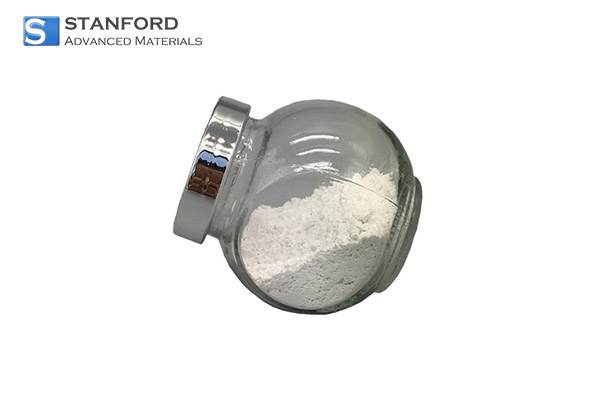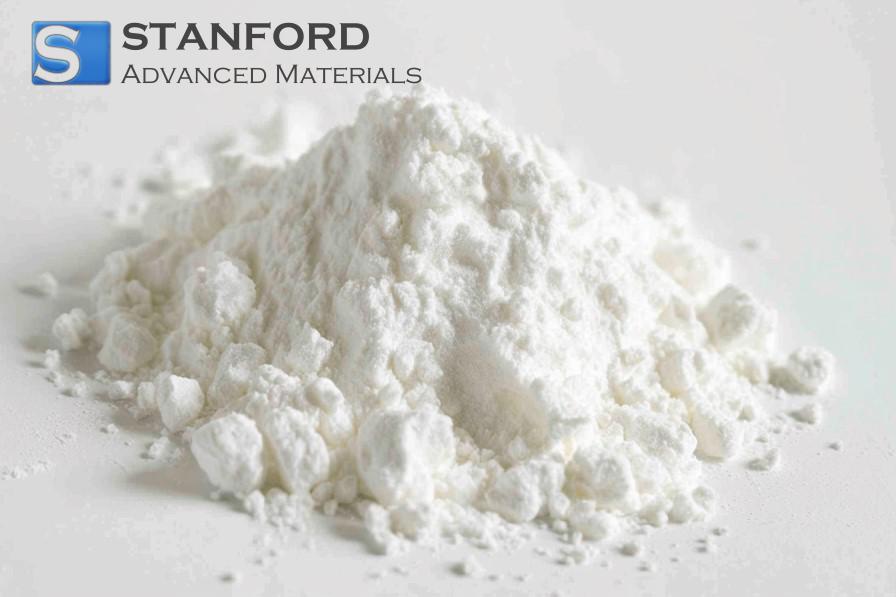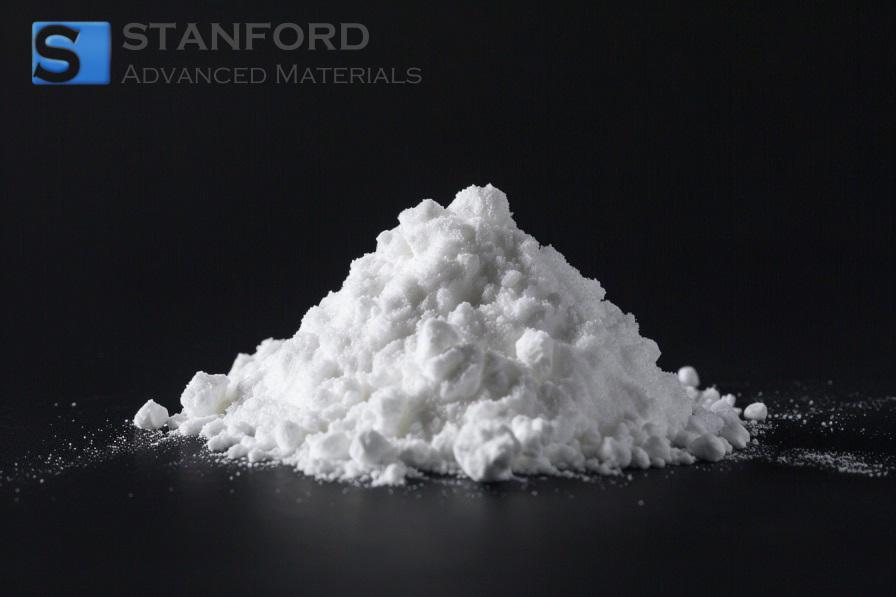SECTION 1. IDENTIFICATION
Product Name: Cesium Zirconate
CAS #: 12158-58-6
Relevant identified uses of the substance: Scientific research and development
Supplier details:
Stanford Advanced Materials
E-mail: sales@samaterials.com
Tel: (949) 407-8904
Address: 23661 Birtcher Dr., Lake Forest, CA 92630 U.S.A.
SECTION 2. HAZARDS IDENTIFICATION
Statements of Hazard: Irritant
Acute Health Hazard: Irritant to eyes, skin, mucous membranes and respiratory system. May be
harmful by ingestion, inhalation or skin absorption.
Chronic Health Hazard: Not Available
HMIS Rating:
H:0 F:0 P:0
NFPA Rating:
H:0 F:0 R:0
To the best of our knowledge, the toxicological properties of this chemical have not been thoroughly
investigated. Use appropriate procedures and precautions to prevent or minimize exposure.
Pictogram:
Signal Word:
Warning
Hazard Statement(s):
H302
Harmful if swallowed.H312
Harmful in contact with skin.
H315
Causes skin irritation.
H319
Causes serious eye irritation.
H332
Harmful if inhaled.
H335
May cause respiratory irritation.
Precautionary Statement(s):
P261
Avoid breathing dust/ fume/ gas/ mist/ vapors/ spray.
P280
Wear protective gloves/protective clothing/eye protection/face protection.
P301+P312
IF SWALLOWED: Call a POISON
CENTER or doctor/physician if you feel unwell.
P302+P352
IF ON SKIN: Wash with plenty of soap and water.
P304+P340
IF INHALED: Remove victim to fresh air and keep at rest in a position comfortable for breathing.
P305+P351+P338
IF IN EYES: Rinse cautiously with water for several minutes. Remove contact lenses, if present and
easy to do. Continue rinsing.
P332+P313
If skin irritation occurs: Get medical advice/ attention.
SECTION 3. COMPOSITION/INFORMATION ON INGREDIENTS
Chemical Name:
Cesium zirconate
Synonyms:
Not Available
CAS Number:
12158-58-6
SECTION 4. FIRST AID MEASURES
Eye Contact:
Flush eyes with large amounts of water for fifteen minutes. Separate eyelids with fingers. If irritati
on persists, seek medical attention.
Skin Contact:
Wash skin with soap and water. If irritation persists, seek medical attention.
Ingestion:
Do not induce vomiting. Seek medical attention.
Inhalation:
Move to a fresh air environment. Contact a physician if breathing becomes difficult.
SECTION 5. FIREFIGHTING MEASURES
Flash Point:
Not Available
Explosion Limits:
Lower: Not Available
Upper: Not Available
Autoignition:
Not Available
Extinguishing Media:
Carbon dioxide, dry chemical powder, alcohol-resistant foam or water spray.
Protective Equipment:
Wear self-contained respirator and fully protective impervious suit.
Specific Hazards:
May emit hazardous fumes under fire conditions.
SECTION 6. ACCIDENTAL RELEASE MEASURES
Personal Protection:
Wear a self-contained breathing apparatus, rubber boots and gloves, and disposable coveralls.
Dispose of coveralls after use.
Keep unprotected persons away.
Environmental Protection:
Keep spills out of sewers and bodies of water. Dike and contain the spill with inert material. Absorb on
sand, vermiculite or diatomite. Transfer material to a container for disposal or recovery. Ventilate area
and wash spill site after material pickup is complete.
SECTION 7. HANDLING AND STORAGE
Handling:
Avoid breathing dust, vapor, mist or gas. Avoid contact with skin and eyes. Avoid prolonged or
repeated exposure. Use only in a chemical fume hood. Open and handle container with care. Keep
ignition sources away.
Storage:
Store in a tightly closed container in a dry, well-ventilated place.
Sensitivities:
Not Available
Storage Temperature:
15 – 30 ºC
SECTION 8. EXPOSURE CONTROLS/PERSONAL PROTECTION
Eyes:
Wear appropriate protective eyeglass or chemical safety goggles. Make sure that there is an eyewash
facility in your vicinity.
Skin:
Wear impervious gloves and protective clothing.
Respiratory:
Use a NIOSH approved respirator when exposure limits are exceeded or if irritation or other symptoms
are experienced.
SECTION 9. PHYSICAL AND CHEMICAL PROPERTIES
Appearance:
Not Available
Odor:
Not Available
Melting Point:
Not Available
Boiling Point:
Not Available
pH Value:
Not Available
Density:
Not Available
Refractive Index, n20D:
Not Available
Viscosity:
Not Available
Solubility in Water:
Not Available
Vapor Pressure:
Not Available
Vapor Density(Air=1):
Not Available
SECTION 10. STABILITY AND REACTIVITY
Stability:
Stable under normal temperatures and pressures.
Incompatibility:
Strong oxidizing agents.
Conditions to Avoid:
Heat, Flame, Sparks, other ignition sources
Hazardous Decomposition Products: Cesium oxides, Zirconium oxides
SECTION 11. TOXICOLOGICAL INFORMATION
RTECS Reference:
Not Available
Target Organs:
Not Available
Toxicity Data:
Not Available
Skin corrosion/irritation:
Not Available
Serious eye damage/irritation:
Not Available
Carcinogenicity:
Not Available
SECTION 12. ECOLOGICAL INFORMATION
Not Available
SECTION 13. DISPOSAL CONSIDERATIONS
Contact a licensed professional waste disposal service. Dispose in a manner consistent with federal,
state and local environmental regulations.
SECTION 14. TRANSPORT INFORMATION
DOT: Not Regulated
IATA: Not Regulated
IMDG: Not Regulated
SECTION 15. REGULATORY INFORMATION
United States:
Toxic Substance Control Act (TSCA): Listed
Superfund Amendments and Reauthorization Act (SARA 302): Not listed
Superfund Amendments and Reauthorization Act (SARA 311/312): Not listed
Superfund Amendments and Reauthorization Act (SARA 313): Not listed
European Union:
European Inventory of Existing Chemical Substances
(EINECS): No.235-284-7
Hazard Codes: Not Available
Risk Statements: Not Available
Safety Statements: Not Available
Canada
Canadian Domestic Substances List (DSL): Not listed
Canadian Non-Domestic Substances List (NDSL): Listed
SECTION 16. OTHER INFORMATION
Safety Data Sheet according to Regulation (EC) No. 1907/2006 (REACH). The above information is
believed to be correct but does not purport to be all inclusive and shall be used only as a guide. The
information in this document is based on the present state of our knowledge and is applicable to the
product with regard to appropriate safety precautions. It does not represent any guarantee of the
properties of the product.


 English
English Española
Española Deutsch
Deutsch Français
Français Italiano
Italiano
 GHS07
GHS07





